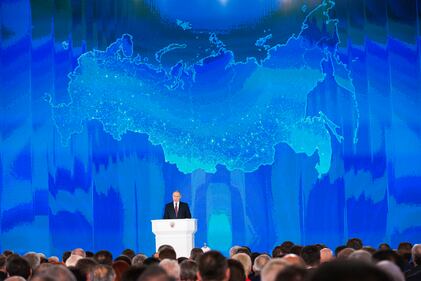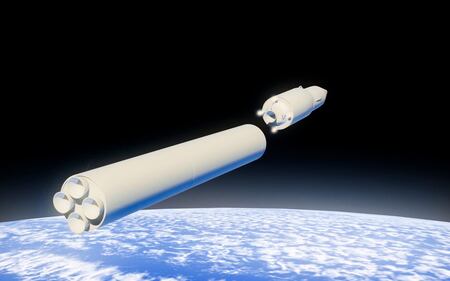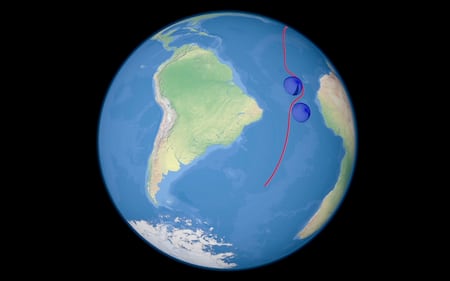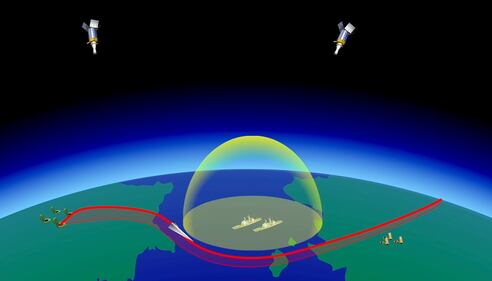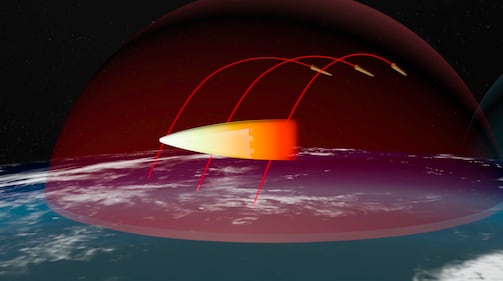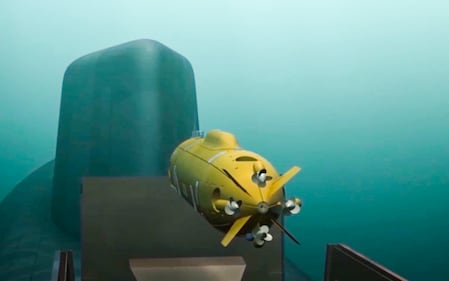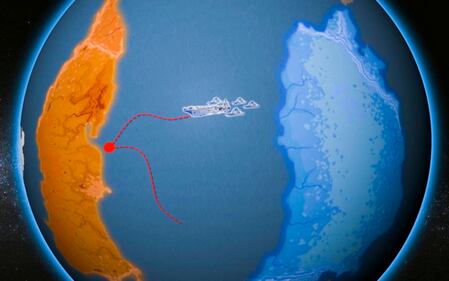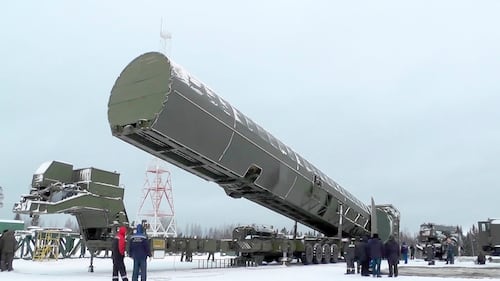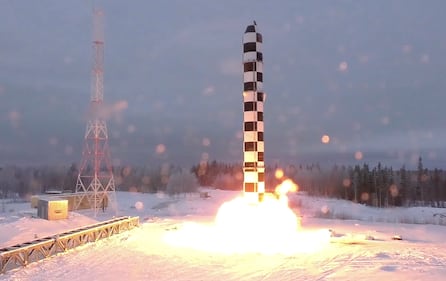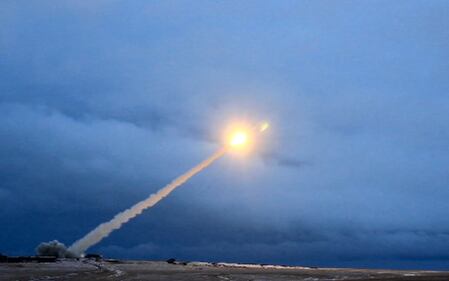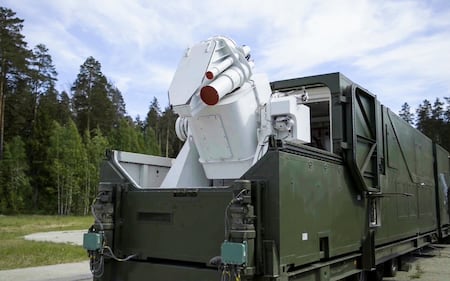WASHINGTON ― In a dramatic presentation Thursday, Russian President Vladimir Putin touted the capabilities of Russian strategic forces, claiming the country now possesses nuclear weapons that are “invincible” and can defeat any missile defense system.
The Russian leader used part of his two-hour state of the union address to show off video and animations of Russia’s RS-28 Sarmat ICBM and its Kanyon nuclear undersea drone, as well as tease a potentially new nuclear-powered intercontinental cruise missile.
This speech comes several weeks before presidential elections in Russia, in which Putin is expected to win a fourth term in office.
During the presentation, which featured a video of weapons striking the U.S. homeland, Putin claimed these systems were pursued by Russia because the U.S. pulled out of the 1972 Anti-Ballistic Missile Treaty and developed increasingly advanced missile defense capabilities.
“You didn’t listen to our country then. Listen to us now,” Putin said, adding that these capabilities were “not a bluff.”
What was highlighted? The first weapon, which Putin claimed would render U.S. defenses “useless,” was the Sarmat, one of Russia’s largest ICBMs, which is capable of carrying multiple nuclear warheads or hypersonic glide vehicles.
Image 0 of 11
He also said a new hypersonic weapon, the Avangard (not to be confused with the RS-26 Rubezh ICBM sometimes referred to by the same name), would travel at 20 times the speed of sound toward “its target like a meteorite.”
Putin described the new nuclear-powered system as a “low-flying, difficult-to-spot cruise missile ... with a practically unlimited range and an unpredictable flight path, which can bypass lines of interception and is invincible in the face of all existing and future systems of both missile defense and air defense.” The missile would supposedly be able to avoid missile defense and defeat systems by avoiding areas covered by U.S. radars.
An animation played during the speech showed the missile navigating past areas of radar coverage as the missile flew southbound through the Atlantic Ocean, down and around South America up into the Northern Hemisphere. The animation ended with the missile traveling over the Pacific Ocean. In theory, the nuclear-propelled weapon could have a limitless range -- if it is truly capable.
U.S. Reaction
While there are many questions about Putin’s claims, Tom Karako, director of the Missile Defense Project at CSIS, told Defense News that Putin’s speech underlines why the U.S. needs to make significant changes to its current sensor architecture.
“We cannot continue to rely on terrestrial radar. We must move to elevated and overhead radar that provides consistent birth-to-death coverage of ballistic missiles, hypersonic boost glide vehicles and cruise missiles,” Karako said.
The U.S. recently released its Nuclear Posture Review, a road map for the country’s nuclear arsenal and related defensive measures. Michael Kofman, an expert on the Russian military at CNA, told Defense News: “It is hard to read the NPR and not feel that the United States is desperately afraid of nuclear weapons. Why we would wish to communicate this so loudly is a mystery.”
He added that the document suggests the use of nuclear weapons by Russia “would strategically alter the nature of any conflict for Washington, and given that in almost all the cases, stakes for D.C. are likely to be much lower than for Moscow, reinforcing the efficacy of such capabilities will only encourage further Russian investment in dual-capable means of delivery and nonstrategic nuclear weapons.”
Russia’s alleged capabilities seem to justify the NPR’s approach toward Russia as a threat to the United States. For Karako’s part, he believes “this is also a validation of the seriousness with which the recently NPR takes the Russia nuclear problem.”
Whether or not Russia’s nuclear-powered cruise missile is something in development or a capability that will soon be fielded, Karako added this: “What we do know is that in addition to being provocative and invading small countries, they are also elevating nuclear weapons in nation security strategy. They are thinking creatively and innovatively of using nuclear weapons in a different way to coerce the United States and our allies.”
The Pentagon, for its part, played down the speech, indicating the department was aware of the equipment.
Pentagon Press Secretary Dana White said Russia’s announcement did not catch the U.S. off guard, to the extent that it was taken into account in the 2018 Nuclear Posture Review.
“We’ve been watching Russia for a long time. We’re not surprised. And we are prepared,” White said. “These weapons ... have been in development for a very long time. Our Nuclear Posture Review takes all of this into account.”
John Rood, undersecretary of defense for policy, told an audience at a Center for Strategic and International Studies that the new revelations from Russia underline the Nuclear Posture Review’s conclusions.
“Our concern about Russia’s capabilities, our concern about Russia’s direction and some of the statements we’ve made in the past about the role of nuclear weapons predated President Putin’s speech yesterday. I personally was not surprised to see a number of his comments in those speech. I think its broadly consistent” with what’s been said in the past,“ Rood said.
“That doesn’t mean I welcome it or it was necessarily the message we would have liked to have received. But I think it was broadly consistent with things that have been said in the past.”
Aaron Mehta for Defense News and Tara Copp for Military Times contributed to this story.
Daniel Cebul is an editorial fellow and general assignments writer for Defense News, C4ISRNET, Fifth Domain and Federal Times.
